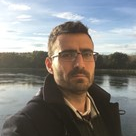Groundwater Quality and Groundwater Vulnerability Assessment
A special issue of Environments (ISSN 2076-3298).
Deadline for manuscript submissions: closed (31 March 2021) | Viewed by 55262
Special Issue Editors
Interests: groundwater management; water quality; seawater intrusion; simulation of water flow; aquifer vulnerability
Special Issues, Collections and Topics in MDPI journals
Interests: groundwater modelling; groundwater vulnerability assessment; hydrogeochemistry; hydrogeophysics; isotope hydrology; management of aquifer recharge; water resources management; floods; climate change impacts on water resources
Special Issues, Collections and Topics in MDPI journals
Special Issue Information
Dear Colleagues,
Groundwater resources are under intense anthropogenic pressures and constant threat of pollution. Human activities, such as agriculture, urbanization and industry, have caused irreversible degradation of groundwater quality; therefore, prevention is the most appropriate strategy in the fight against groundwater pollution. Vulnerability and pollution risk maps of groundwater constitute important tools for groundwater management and protection. Groundwater vulnerability is divided into specific vulnerability and intrinsic vulnerability. Intrinsic vulnerability of an aquifer can be defined as the ease with which a contaminant introduced onto the ground surface can reach and diffuse in groundwater. Specific vulnerability is used to define the vulnerability of groundwater to particular contaminants or a group of contaminants by taking into account the contaminants’ physicochemical properties and their relationships. Groundwater pollution risk can be defined as the process of estimating the possibility that a particular event may occur under a given set of circumstances and the assessment is achieved by overlaying hazard and vulnerability.
This Special Issue will focus on exploring application of groundwater vulnerability and pollution risk assessment in porous, karst and fissured rock aquifers located in coastal and inland zones. We invite the interested hydrogeologists and other researchers from the related fields to contribute high-quality original research as well as review articles in the stated issue.
Prof. Dr. Konstantinos Voudouris
Dr. Kazakis Nerantzis
Guest Editors
Manuscript Submission Information
Manuscripts should be submitted online at www.mdpi.com by registering and logging in to this website. Once you are registered, click here to go to the submission form. Manuscripts can be submitted until the deadline. All submissions that pass pre-check are peer-reviewed. Accepted papers will be published continuously in the journal (as soon as accepted) and will be listed together on the special issue website. Research articles, review articles as well as short communications are invited. For planned papers, a title and short abstract (about 100 words) can be sent to the Editorial Office for announcement on this website.
Submitted manuscripts should not have been published previously, nor be under consideration for publication elsewhere (except conference proceedings papers). All manuscripts are thoroughly refereed through a single-blind peer-review process. A guide for authors and other relevant information for submission of manuscripts is available on the Instructions for Authors page. Environments is an international peer-reviewed open access monthly journal published by MDPI.
Please visit the Instructions for Authors page before submitting a manuscript. The Article Processing Charge (APC) for publication in this open access journal is 1800 CHF (Swiss Francs). Submitted papers should be well formatted and use good English. Authors may use MDPI's English editing service prior to publication or during author revisions.
Keywords
- Intrinsic and Specific Vulnerability
- Pollution risk
- Coastal Aquifers
- Karst and Fissured rock aquifers
- GIS environment
- Water quality indices
- Statistical analysis
- Simulation models






